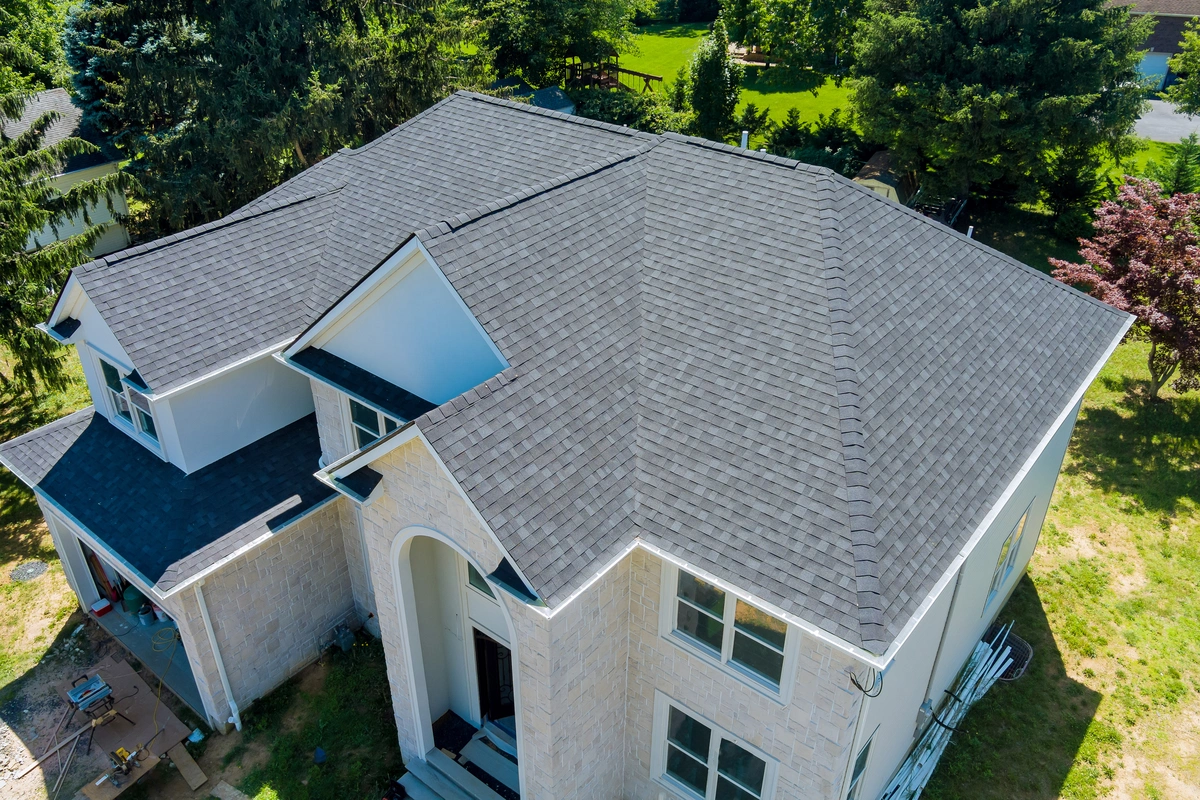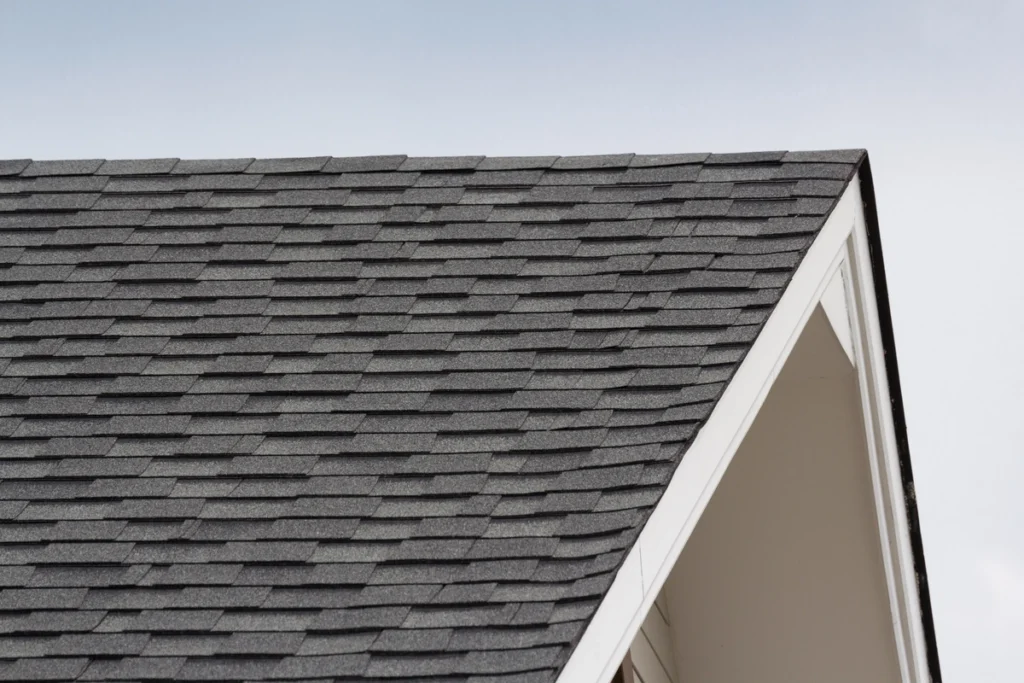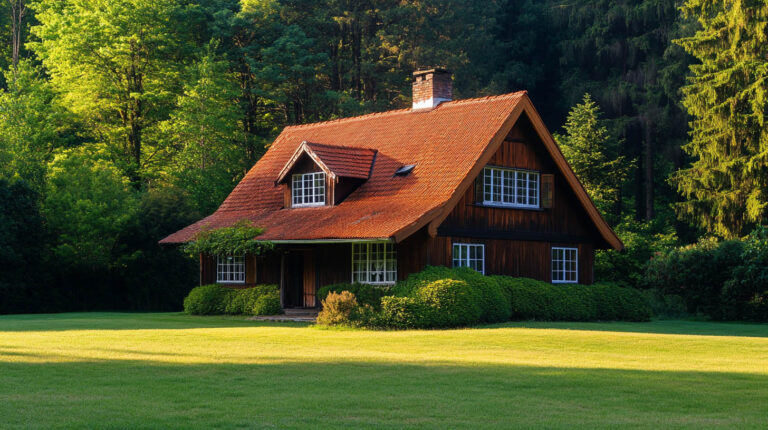
Blog
What are Architectural Shingles? Everything You Need to Know
Your roof is not just a functional element of your home; it’s also a significant part of its aesthetics and curb appeal. When it comes to roofing materials, architectural shingles have gained popularity for their:
- Durability 💪
- Versatility 🎭
- Enhanced appearance ✨
But what are architectural shingles, and why should you choose them for your home? In this blog post, we will help you understand what architectural shingles are, how they differ from 3-tab and designer shingles, their pros and cons, cost considerations, and signs that may indicate the need for a shingle roof replacement.
What Are Architectural Shingles?

Architectural shingles, often known as laminated or dimensional shingles, are a type of roofing material that offers a more sophisticated and textured appearance compared to traditional 3-tab shingles. They are made by bonding multiple layers of asphalt together, resulting in a three-dimensional, layered look that mimics the appearance of wood or slate roofing.
These shingles come in various shapes, sizes, and colors, allowing homeowners to achieve a custom and aesthetically pleasing roof design. The unique layering technique also provides extra strength and durability, making architectural shingles a long-lasting and reliable roofing option.
Differences Between Architectural, 3-Tab, and Designer Shingles
When it comes to asphalt shingles, homeowners have no shortage of choices. These days, asphalt shingles are better than ever, with more versatility to meet your needs. But what style is right for you? Keep reading to find out!
Architectural Shingles:
- Appearance: Architectural shingles have a textured, multi-dimensional look that can resemble natural materials like wood or slate. They provide a more upscale appearance compared to 3-tab shingles.
- Durability: These shingles are thicker and more robust than 3-tab shingles, making them more resistant to wind, hail, and other weather-related damage.
- Lifespan: Architectural shingles typically have a longer lifespan, often lasting 30 years or more, making them a cost-effective choice in the long run.
- Cost: While they are more expensive upfront compared to 3-tab shingles, architectural shingles offer superior value due to their longevity and enhanced appearance.
3-Tab Shingles:
- Appearance: 3-tab shingles have a flat, uniform appearance with straight edges. They are more basic in design and tend to have a less appealing aesthetic compared to architectural shingles.
- Durability: 3-tab shingles are thinner and less durable, making them more susceptible to wind and impact damage.
- Lifespan: Typically, 3-tab shingles have a lifespan of 15-20 years, which is shorter than that of architectural shingles.
- Cost: 3-tab shingles are the most budget-friendly option among the three, but they may require more frequent replacements, which can add up over time.
Designer Shingles:
- Appearance: Designer shingles take aesthetics to the next level, often replicating the look of high-end roofing materials like cedar shakes or clay tiles. They offer a truly luxurious appearance.
- Durability: Designer shingles are usually more durable than 3-tab shingles but may not match the longevity of architectural shingles.
- Lifespan: The lifespan of designer shingles can vary depending on the manufacturer and specific product, but they generally fall between the lifespans of 3-tab and architectural shingles.
- Cost: Designer shingles are the most expensive option due to their premium appearance and added durability.
Pros and Cons of Architectural Shingles
Thinking that architectural roofing shingles are the right choice for you? Be sure to consider all of the facts below!
✅ Pros:
- Enhanced Aesthetics: Architectural shingles provide a visually appealing and textured roof that can significantly boost your home’s curb appeal.
- Durability: These shingles offer excellent resistance to wind, hail, and other weather-related damage, ensuring long-lasting protection for your home.
- Longer Lifespan: With a typical lifespan of 30 years or more, architectural shingles provide a great return on investment over time.
- Versatility: They come in a wide range of colors and styles, allowing you to customize your roof to match your home’s architecture and your personal preferences.
- Increased Property Value: The attractive appearance and durability of architectural shingles can increase the resale value of your home.
❌ Cons:
- Higher Initial Cost: Architectural shingles are more expensive upfront compared to 3-tab shingles, which may be a deterrent for some homeowners.
- Installation Complexity: Proper installation is crucial to maximize the benefits of architectural shingles, so it’s essential to hire experienced roofing professionals.
- Weight: Due to their thicker construction, architectural shingles may be heavier than 3-tab shingles, which could necessitate additional structural support.
Cost of Architectural Shingles
The cost of architectural shingles varies depending on several factors, including the brand, quality, region, and the size and complexity of your roof. On average, you can expect to pay between $200 and $400 per square (100 square feet) of architectural shingles, including materials and labor. This cost range is higher than that of 3-tab shingles, but the long lifespan and improved aesthetics make it a worthwhile investment for many homeowners.
Signs You Might Need a Shingle Roof Replacement

Replacing your roof is expensive. Make sure it’s necessary by looking for these specific signs.
- Age of the Roof: The age of your roof is a crucial factor in determining whether it needs replacement. If your shingles are nearing the end of their expected lifespan, it’s time to consider replacement, especially if they show signs of wear and tear.
- Curling or Buckling Shingles: Shingles that are curling at the edges or buckling in the middle are a clear indication that they are no longer effectively protecting your home. These issues can lead to leaks and should not be ignored.
- Missing Shingles: Missing shingles can result from wind damage or aging. When shingles are absent, your roof is vulnerable to water infiltration, which can cause extensive damage to your home’s interior.
- Granule Loss: If you notice an excessive amount of granules in your gutters or on the ground, it’s a sign that your shingles are deteriorating. Granule loss can lead to shingle degradation and reduced protection against the elements.
- Leaks or Water Stains: Water stains on your ceilings or walls are clear indicators of a roof leak. If left unaddressed, these leaks can lead to more extensive and costly damage.
- Damaged Flashing: Damaged or deteriorated flashing around roof penetrations such as chimneys, vents, or skylights can allow water to seep into your home. Ensure that flashing is in good condition to prevent leaks.
- Algae or Moss Growth: Algae and moss can take hold on shingles, causing discoloration and deterioration over time. While these issues may not be an immediate threat, they can lead to premature shingle aging.
Work With an Expert Roofing Contractor
Architectural shingles are an excellent roofing option that combines aesthetics, durability, and longevity. Understanding the differences between architectural, 3-tab, and designer shingles, as well as their pros and cons, can help you make an informed decision about which roofing material is right for your home. While the initial cost of architectural shingles may be higher, their superior performance and attractive appearance often make them a worthwhile investment in the long run. Contact Avenue Roofing today for all of your asphalt shingle needs!



